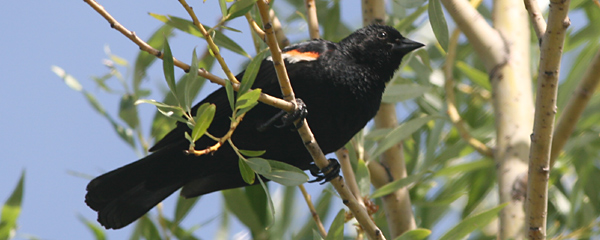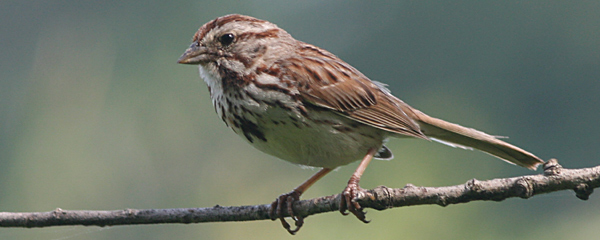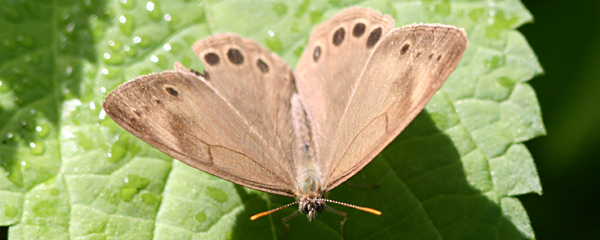Moving can be murder, don’t you think? If it isn’t one thing (transporting all of your possessions in boxes across a long distance) it’s another (unpacking said boxes!) After nearly a week of relentless redistribution of my estate, I needed a break. Furthermore, I was itching to uncover the natural splendor of Rochester. Sure, I’ve been to Montezuma NWR plenty of times and even dabbled in local patches like Irondequoit Bay, but on those occasions, I was just passing through. Now that this is my home, I need to move this birding relationship to the next level.
Of course, July is a tricky time to assess the avifauna in any given area, given that most ecosystems are down to just resident breeders. Usually this means the same old same old birds and hot weather to boot. Mendon Ponds, however, is a local park well-respected for its natural splendor. This may well be my year-round go-to spot so it deserved to be first on my list. The prospect of new birds like Virginia Rail and Least Bittern didn’t hurt either!
My first impression of Mendon Ponds is highly favorable. This place is not only beautiful but birdy! Seth and I took Hopkins Point Road to the Hundred Acre Pond and walked south along the rather sloppy horse trail. While we didn’t see any species out of the ordinary, the anticipated birds were excellent. Common Yellowthroats were never more aptly names, with scores of adults and juveniles showing off their buttery chins. American Redstarts and Yellow Warblers rounded out the day’s wood-warblers while Song, Chipping, and chattering Swamp represented the sparrows. And while both Baltimore Oriole and Common Grackle were easy to find, the ambassador icterid was most certainly Red-winged Blackbird.

Finding blackbirds is no challenge at Mendon Ponds
As I said, there were no real surprises – waxwings, chickadees, and titmice are as prosaic as they come – but that doesn’t signal a lack of interesting sightings. For example, along with Eastern Phoebes and Eastern Wood-Pewees, we noted some flycatchers catching flies in an especially acrobatic way down along the reeds between Hundred Acre Pond and Deep Pond. These brownish birds balanced on narrow blades right above the water’s surface, sometimes even hovering higher up while hawking for insects. My suspicion is that these were Willow Flycatchers but without call notes, I’m in no position to rule out Alder. Let’s call it Traill’s Flycatcher and move on!
All in all, we enjoyed a fine summer morning of birding. My introduction into the inner workings of Rochester birding was made all the more memorable by the appearance of a life bird! That’s right… while rails continue to elude me this year, a Least Bittern has finally deigned o be seen. One gangly bird, a punk rock wader if there ever was one, allowed us excellent flight looks, crossing our path not once but twice. I feel better about this move already!
The cloud to our silver lining is that one of the eyecups to my binoculars, already loose, came off completely and rolled to the depths of the pond. Well, I don’t know about depths, but I sure couldn’t retrieve it. Thus birding will be a bit more uncomfortable while I try to approximate the depth of the eyecup with my curled fingers. Now would be an ideal time for an optic sponsor to step forward!
I would be remiss if I didn’t point out how outstanding the insect watching was as well. We encountered droves of dragonflies, fully deserving their own post, along with a variety of interesting butterflies. Red Admiral was easy to identify but the following flutterer, incredibly common along the paths we traveled, was unknown to me until now. I believe this satyr-type is an Eyed Brown (Satyrodes eurydice) but might be persuaded otherwise:















Wow, you wasted no time hitting a great site in the southern Rochester area! Mendon Ponds is my “stomping” grounds when I’m back in town, though I rarely stomp while birding there. Glad you had a great inaugural visit!
-Mike
Wow, Rochester! We moved from that area (actually a tad south in Livonia) 3 years ago. The great birding makes up for the weather and will keep you sane during winter. Make sure to subscribe to GeneseeBirds-L Digest http://mail.geneseo.edu/mailman/listinfo/geneseebirds-l
You’ll find out about all the hot spots – it’s a great birding community. Also, check out the Little Finger Lakes area to your south. You’ll need to get permits for Hemlock and Canadice Lakes at http://www.cityofrochester.gov/watershedpermit.htm.
Conesus Lake (where we were) has a wonderful inlet at the south end. Used to be a GBH rookery until the Eagles moved in. A lot of my artwork comes from that inlet.
You must try Abbot’s Frozen Custard – the original store is in Charlotte but there are others around.
Good luck! Pam